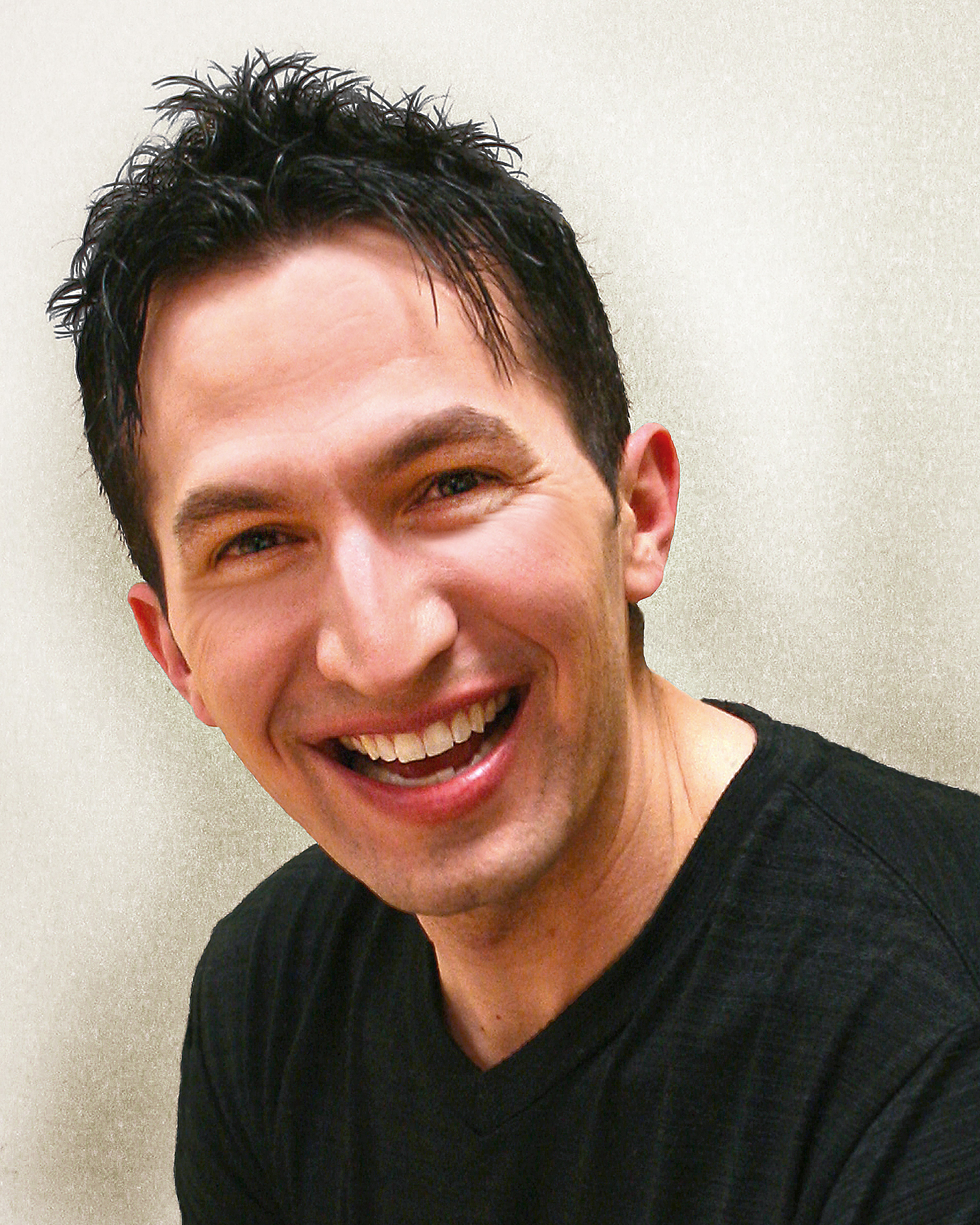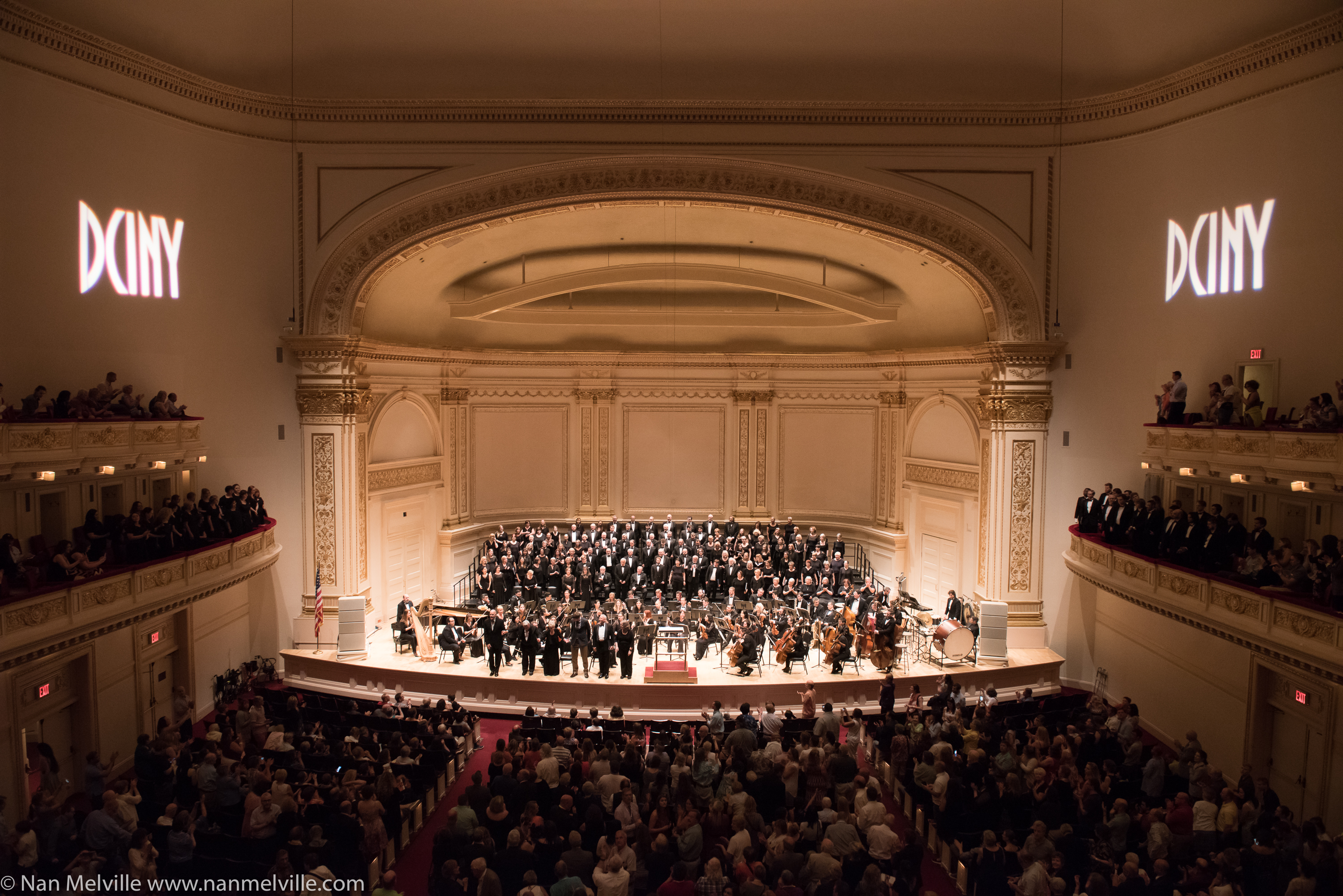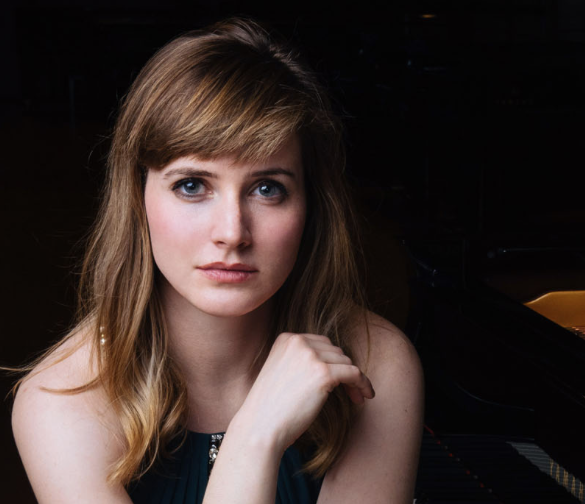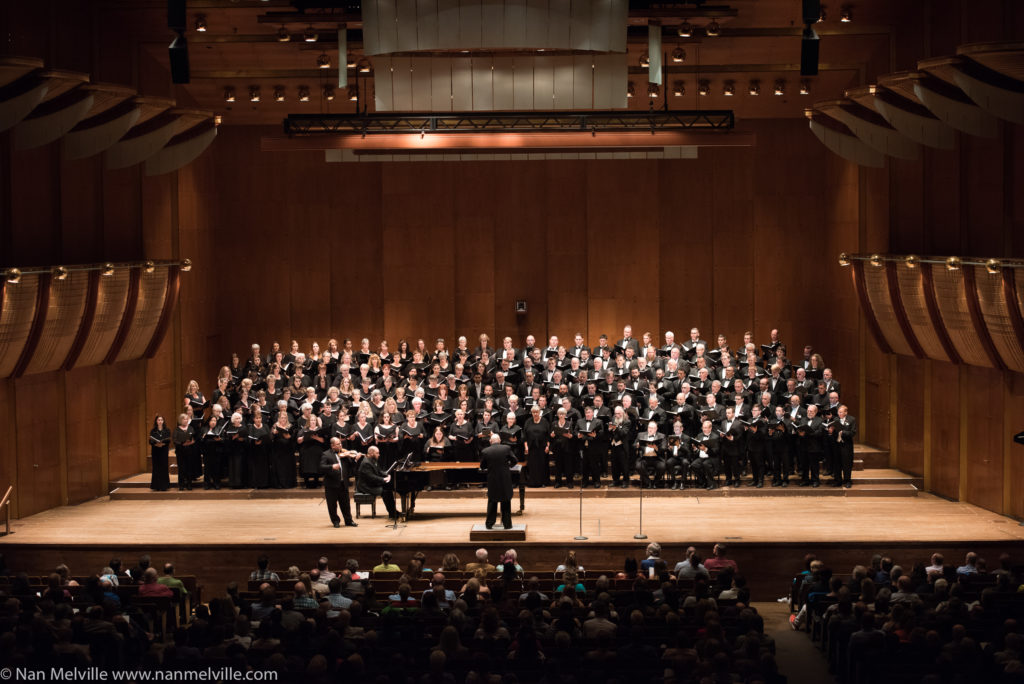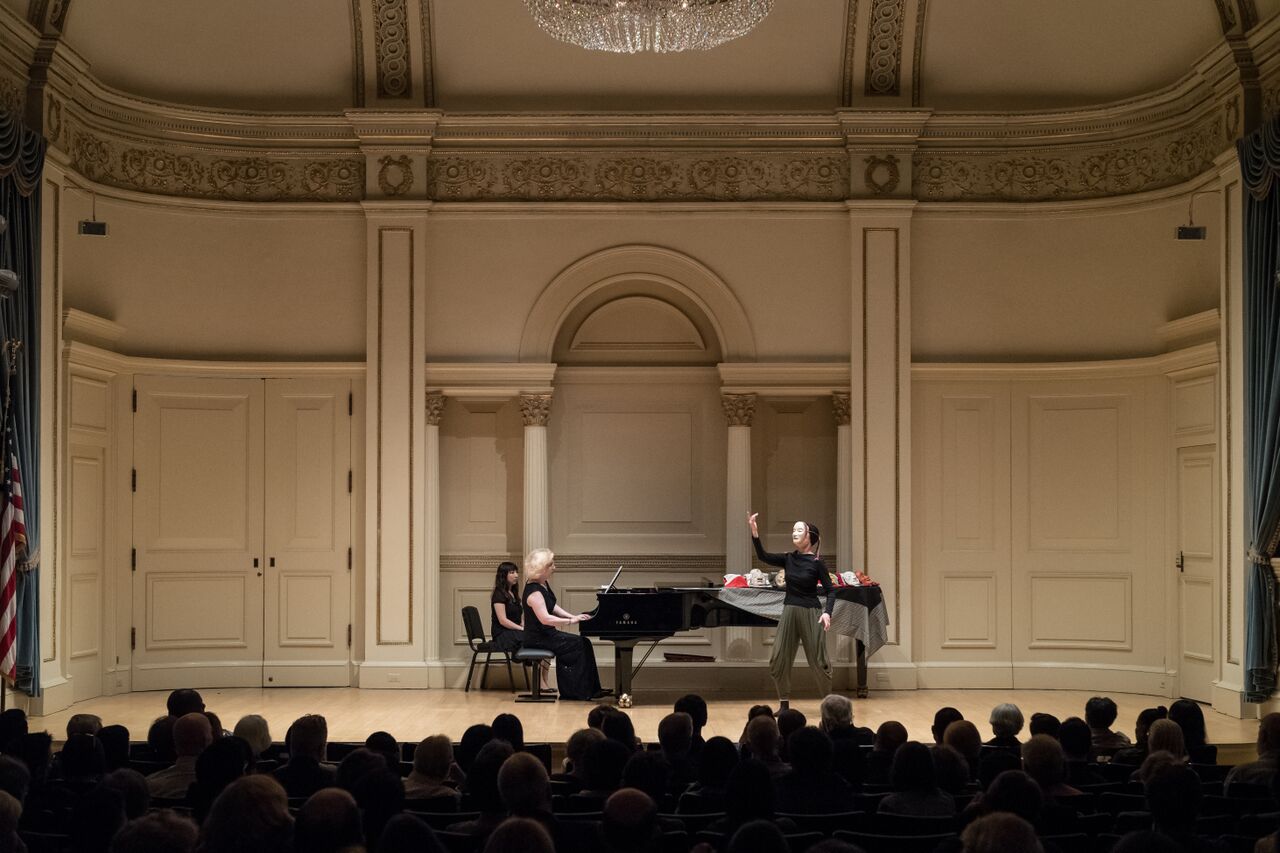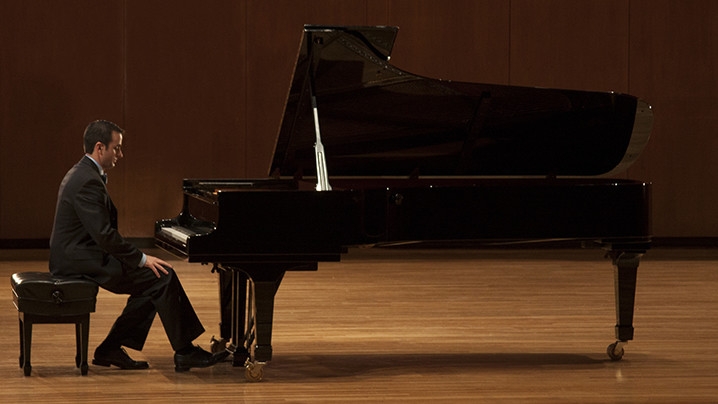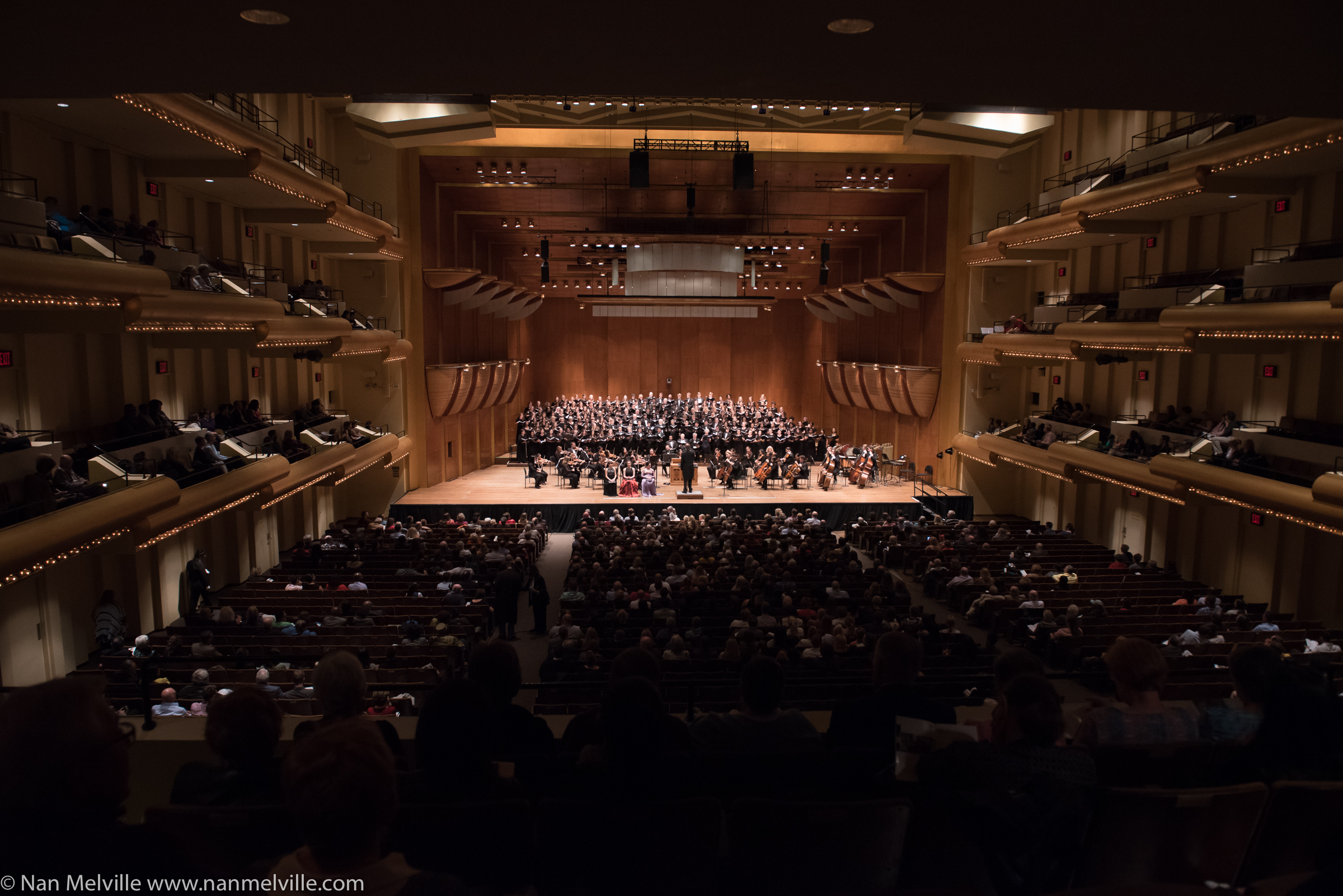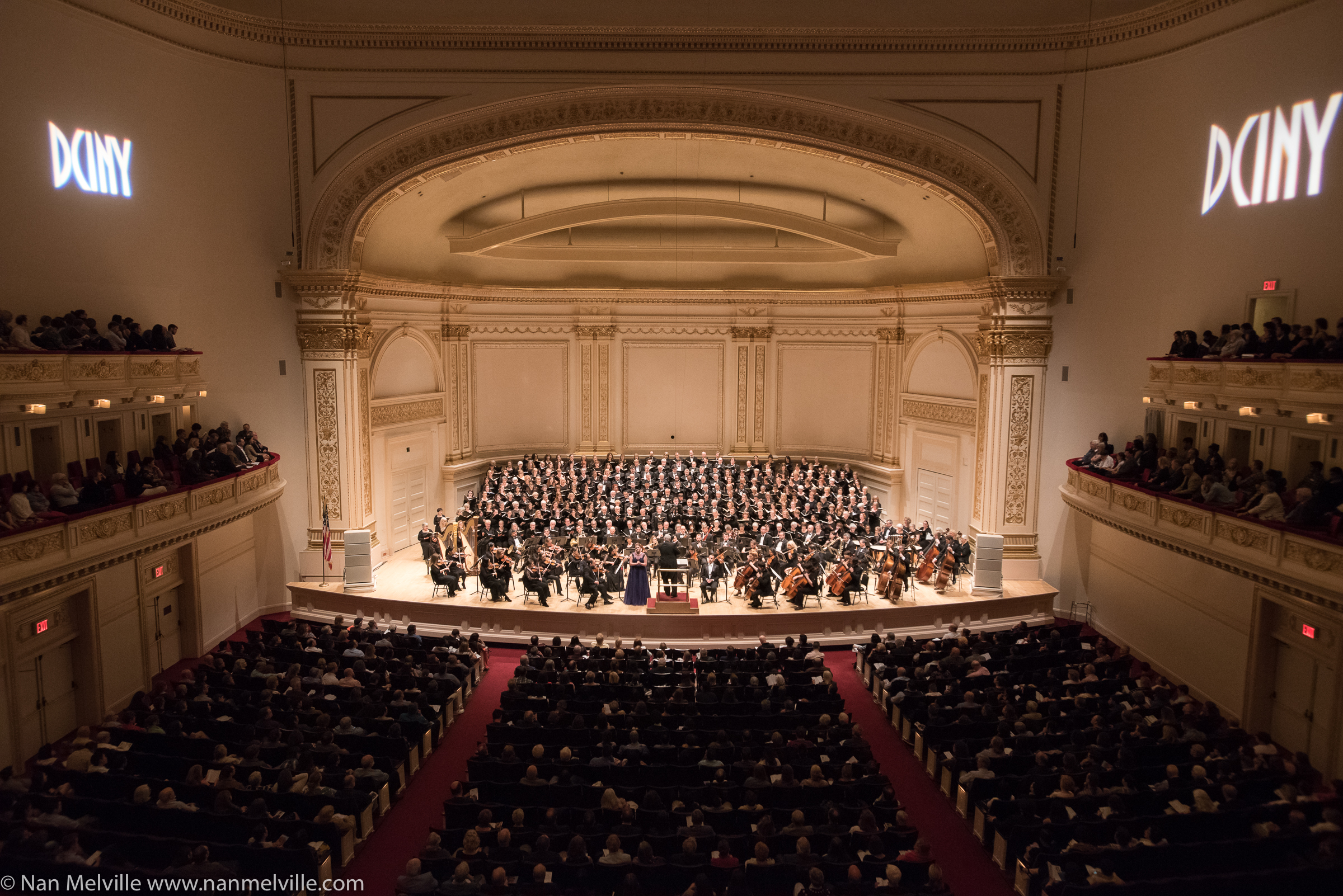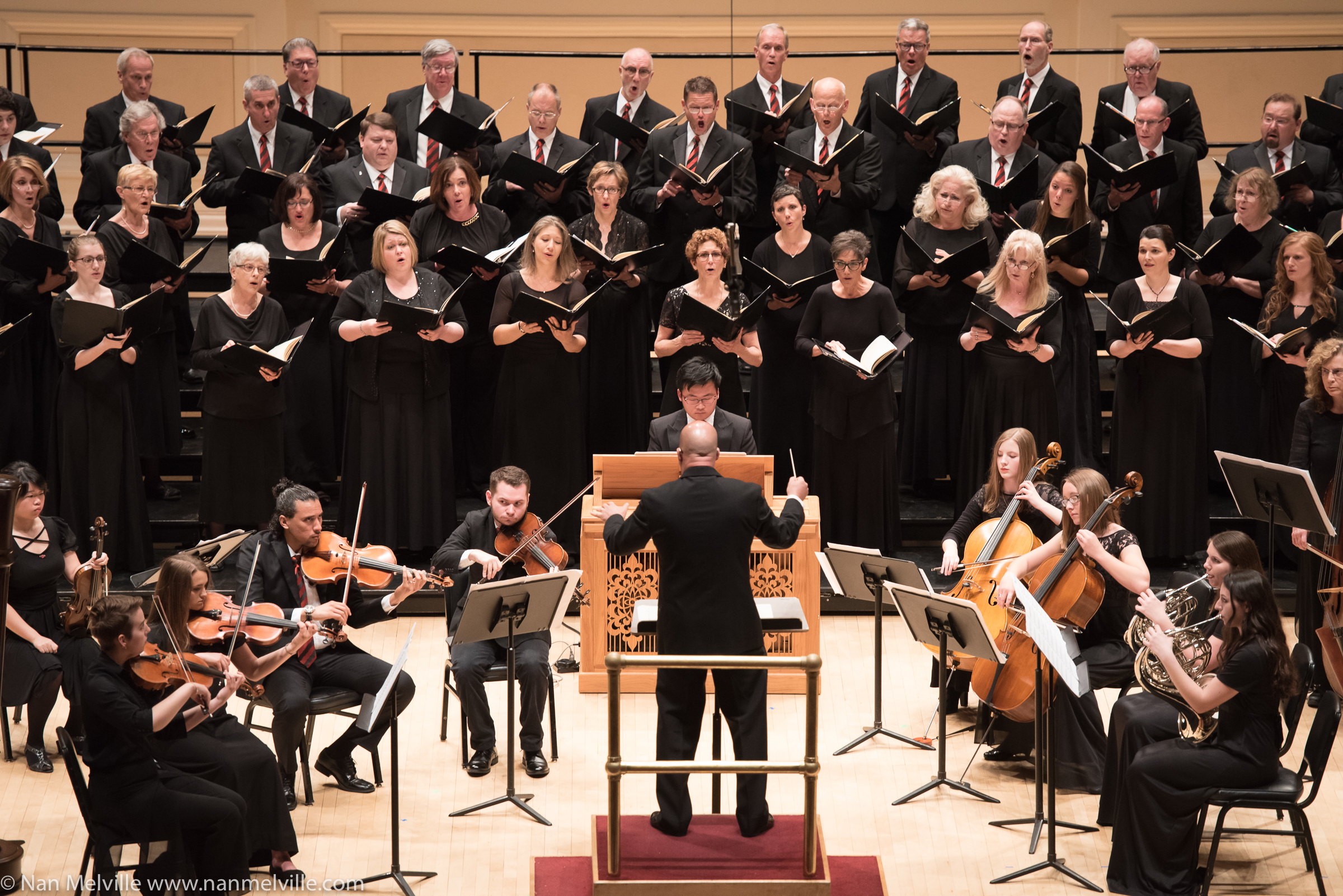MidAmerica Productions presents New England Symphonic Ensemble
New England Symphonic Ensemble; Preston Hawes, Artistic Director
Jane Morison, Sandy R. Holland, Sonja Sepúlveda, Michael J. Glasgow conductors
Haley Sicking, soprano, Cody Austin, tenor
Stern Auditorium at Carnegie Hall, New York, NY
June 11, 2017
On June 11, 2017, MidAmerica Productions presented a three-part concert featuring the New England Wind Ensemble, including a New York premiere of Michael J. Glasgow’s Requiem. The Glasgow work is to be the primary focus of this review, though I will briefly mention the others, as those performers are deserving of mention.
Before I continue, I’d like to say that a two-intermission concert starting at 8:30pm on a Sunday night is something that should be avoided. This reviewer got to watch a group of youngsters fidgeting restlessly for nearly two hours, for which I cannot blame them – it was getting very late, and they were getting tired.
The concert opened with combined choirs of young singers (elementary and middle school aged) from North Carolina and Tennessee. In ten works, with the conducting honors divided evenly between Jane Morison and Sandy R. Holland, the youngsters delighted their friends and families with a joyous performance.
After the first intermission, we heard the Requiem by John Rutter – the first of two requiems on the program. I have spoken of the history of this work in prior reviews, so I will only mention the strong influence that Gabriel Fauré’s Requiem had on Rutter’s work. Conductor Sonja Sepúlveda led an outstanding performance of this wonderful piece. It must be said that the New England Symphonic Ensemble is an excellent group. Kudos also to soprano soloist Haley Sicking, and the combined choruses from North Carolina, South Carolina, and New Jersey for their fine work.
After another intermission, Michael J. Glasgow (b. 1977) took the podium to conduct the New York premiere of his Requiem. This seven-movement, forty-minute work is modeled after Fauré’s. Mr. Glasgow writes in his program notes of having had his first exposure to the Requiem text being Fauré’s; it would be a mistake, however, to assume that this is a clone of the Fauré, as there are many unsettled moments that bring to mind some of the less serene requiems (such as those of Mozart, Berlioz, Verdi, etc.).
I was glad to have read Mr. Glasgow’s notes, as they provided much insight into understanding his conception. He wrote of his struggles with self-identity and loss; some losses were after long lives, but others were lives cut short by hatred, ignorance, and violence.
This Requiem seems to be much more for the living than for the departed. There is a strong autobiographical element, as can be heard in the Introit, which is at once full of shock, anguish, and anger. It’s a powerful, emotionally supercharged opening, but some very large handbells were virtually inaudible, probably a combination of the soft clappers of the bells and the hall acoustic. The Offertory had a sinister quality that eventually moved towards a peaceful mood. The Pie Jesu was heavenly, showing Mr. Glasgow’s abundant melodic gift. The Sanctus and Benedictus with an unusual martial quality, were triumphant, as anger gave way to peace. There was a final angry burst in the Libera Me, but it had more the feel of defiance rather than rage. After a bridge that Mr. Glasgow called the “Ascension Interlude,” the sublime Lacrimosa, which was strongly reminiscent of Fauré’s In Paradisum (one could hardly pick a more beautiful model!) was the final movement.
Mr. Glasgow originally finished the Requiem in 2001, but it remains unpublished. One has the distinct feeling that this is still very much a work in progress, and I would not be surprised if Mr. Glasgow has different ideas for this work at age fifty. I would be very interested to hear this work again.
After the last notes of the Lacrimosa faded away to silence, the audience immediately rewarded all with a long standing ovation. Mr. Glasgow can be proud – it was a memorable performance of a highly personal, emotional work. Congratulations to the soloists, tenor Cody Austin, and soprano Haley Sicking, the North Carolina-based choruses, and once again, special mention to the New England Symphonic Ensemble.
I’ll leave the last words to Mr. Glasgow: “Now, more than ever, the hearts of humanity need to be moved by the communal, healing power of music. Now, more than ever, we need to recognize that despite the horror and ignorance, the day will come when peace, tranquility, and love will reign. Now, more than ever, we need that time to be now.”

